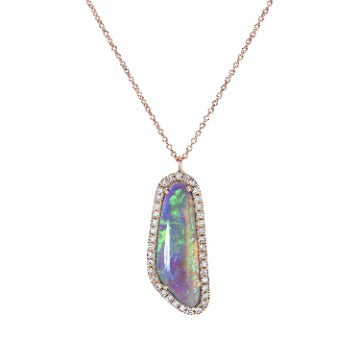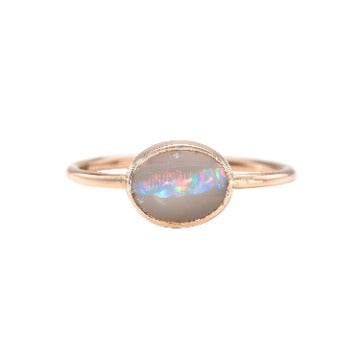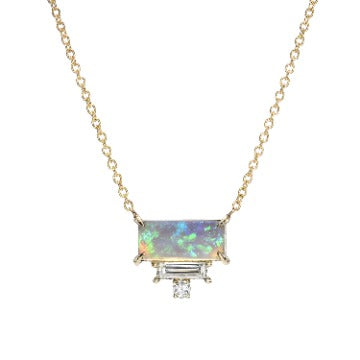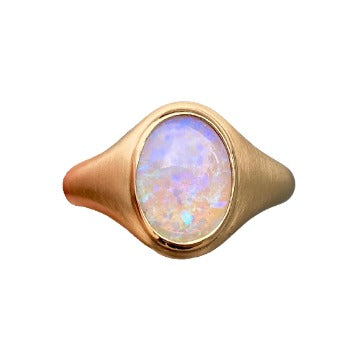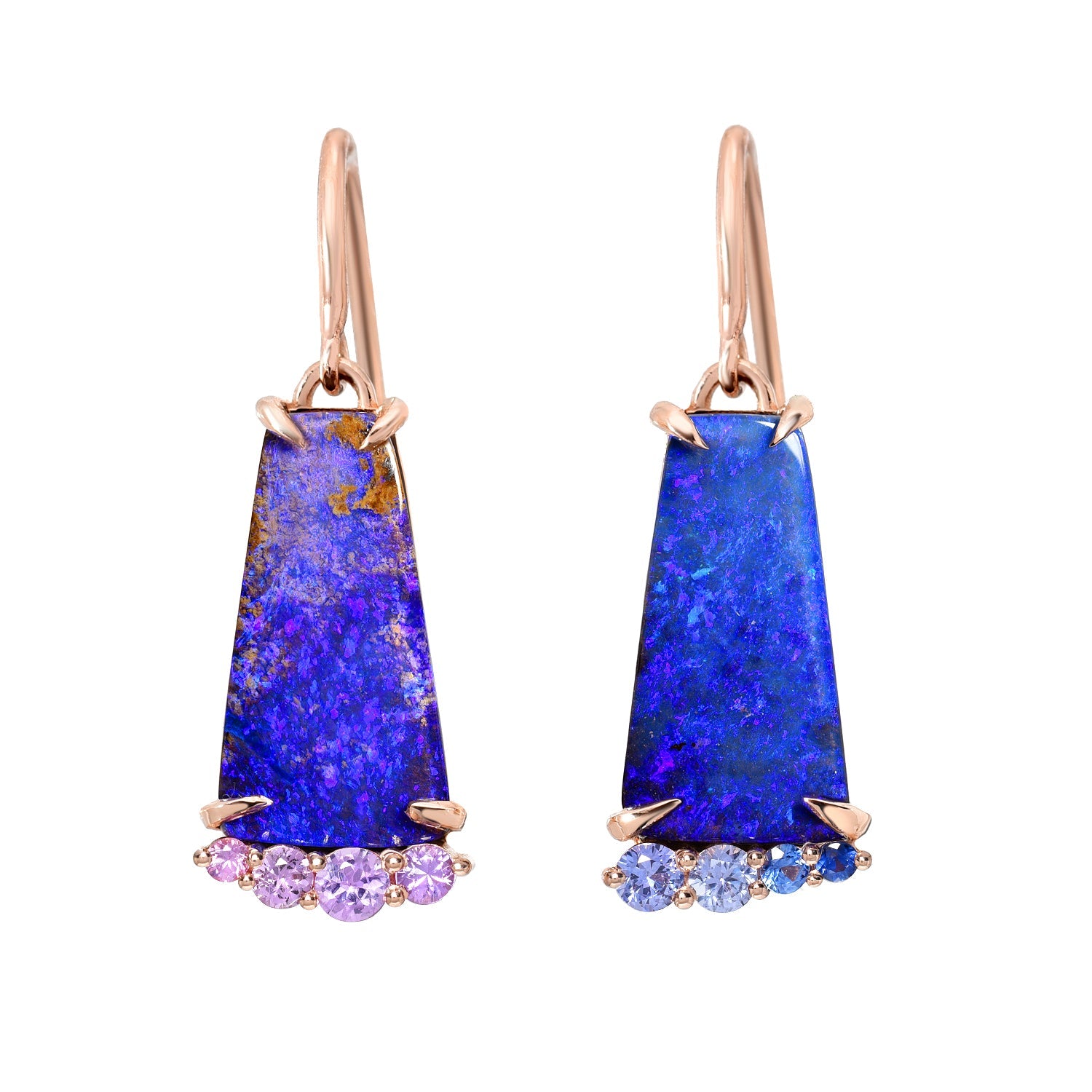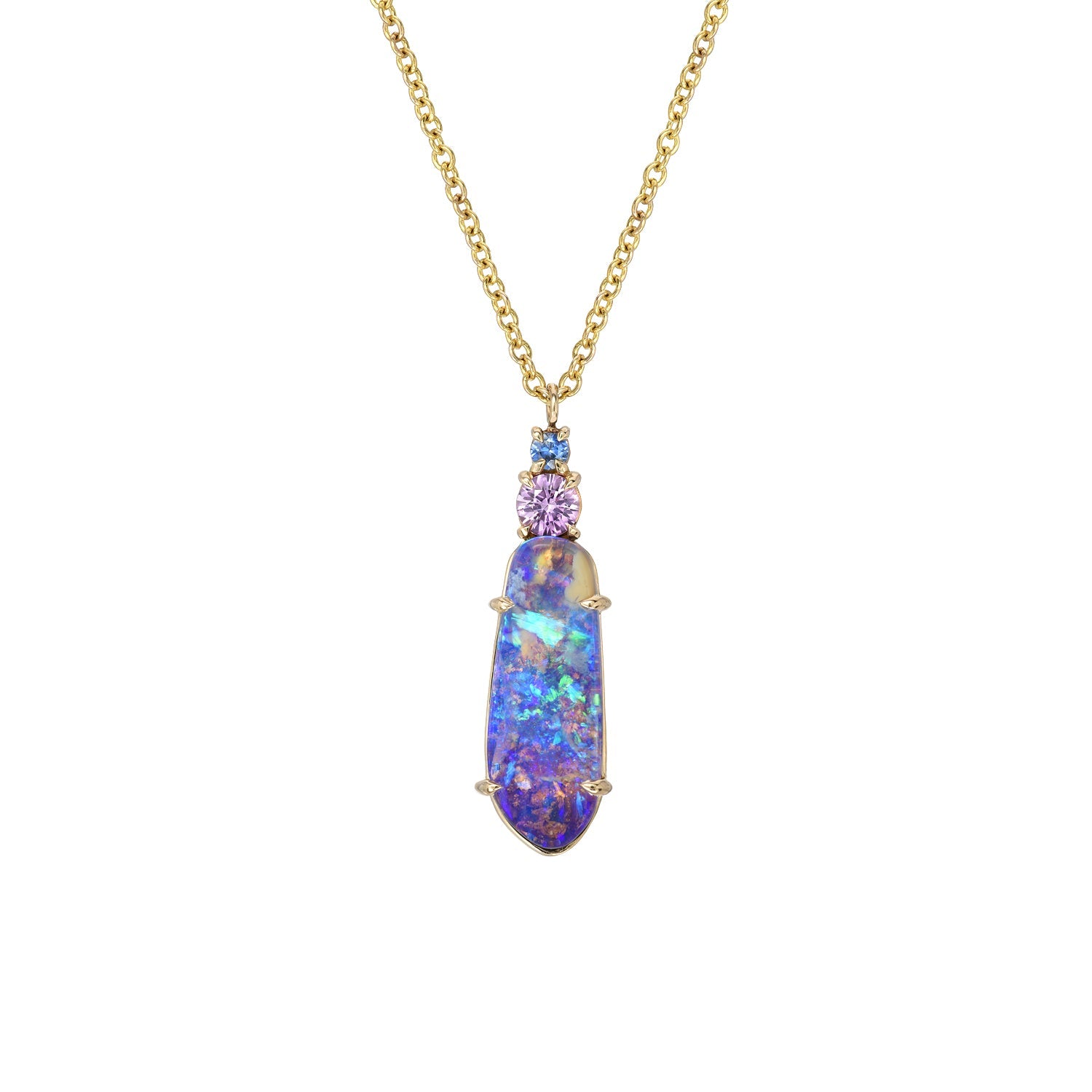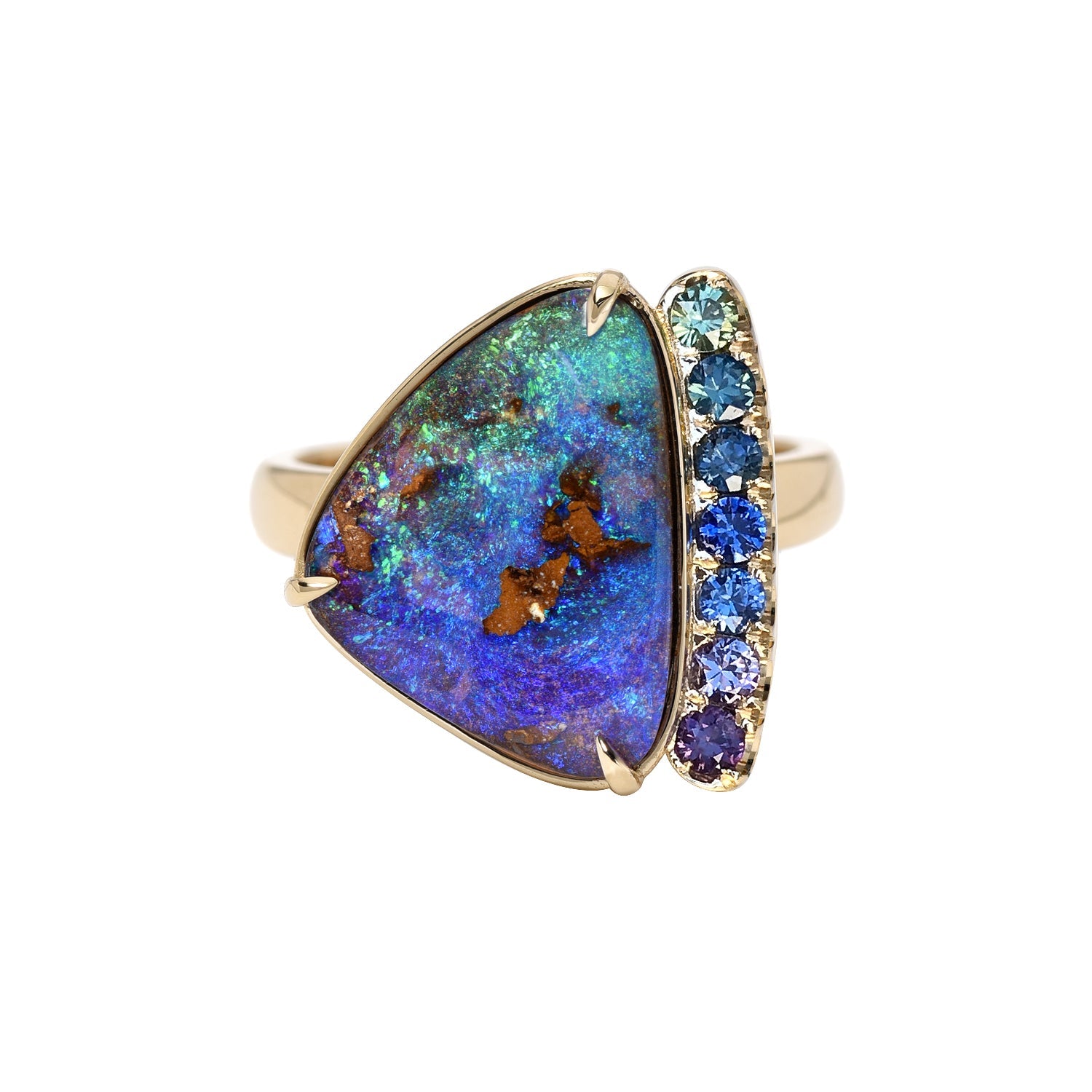Do you own an Opal ring or other item of Opal jewelry? Perhaps someone in your family does? Well, chances are that the Opal it sports hails from Australia. Opals are among the most prized gemstones used in jewelry - alongside diamonds, emeralds, pearls, and sapphires. They are incredibly dynamic stones known for their play of color, that encompass a rainbow spectrum of hues. Each one is unique - their variety extraordinary - and over 95% of them come from Australia. Opals from each individual mining town bear stone characteristics common to that region. In this article, we’ll provide a breakdown of the most significant Australian Opal mining towns and the types of Opals unearthed from each one.
Australian Opals
Australia has a rich and fascinating history when it comes to Opals. One that dates back 5 million years to when the gemstone was first forming during the Cretaceous age. Despite its primordial history, Australia’s impressive Opal reserve went essentially unnoticed until rather recently.
Australian Opals were discovered in the 1800s but initially found little fanfare in the European markets. They weren’t commercially sought out. Why? The supply chain was limited making it difficult for jewelers to depend on their steady stream. But they also faced stiff competition from suppliers of other gemstones eager to dominate the market and willing to go to great lengths to damage the reputation of Opals — including spreading false rumors about the colorful stone. It took Australia about 50 or so years to leverage the massive “gold” mine it had stumbled upon.
By 1915, many regions of Australia had evolved into mining towns — only instead of gold, they were digging up Opals. This started what would be called the “Australian Opal Rush,” and soon one of the first and most celebrated mining settlements was founded — Coober Pedy. Years later it was followed by Lightning Ridge in New South Wales. Today, these two mining towns, along with a few others, produce the bulk of the world’s precious Opal.
Where is Opal Mined in Australia?
Up until the early 20th century, London gem merchants were wary of Australian Opals. For a time, they refused to pay for them. Tullie Wollaston - an important and influential Opal pioneer who was born in Australia to English parents - persisted, and managed to pressure the firm Hasluck Bros. of Hatton Garden to agree to try the stones out, funneling them to jewelry houses in both America and Europe. In under 5 years, Australian Opals had taken the market by storm, and could be found in high end jewelry designs by Cartier, Tiffany, Lalique, and other high-end establishments. Many of those stones came from Australia’s most iconic Opal fields — each site producing high-end precious stones, with qualities unique to the specific Opal field they were derived from.
These are some of the most prominent Opal fields in Australia.
White Cliffs
Mining commenced in the region of White Cliffs, in New South Wales, in the late 1880s. The beautiful seam Opal found here captivated the world and it wasn’t long before a town of 3,000 people settled around the mining field. Though the fields are now largely depleted, a limited amount of white and crystal Opal can still be uncovered.
White Cliffs is also home to the incredibly rare Pineapple Opal fossils — it’s the only place in the world they have ever been found.
Queensland Fields
The Queensland fields are a patchwork affair of multiple small settlements and camps spread across roughly 600 miles. Nearly all of the world’s boulder Opal comes from this area, mined in locations such as Yowah, Quilpie, Jundah, Oplaton, Eromanga, and Winton. The resulting Opals are vibrant stones, with ironstone (or sometimes sandstone) bases that allow their colors to achieve maximum contrast potential.
Lighting Ridge
Lighting Ridge is a legendary Opal mining town, referred to by locals as, “The Ridge.” Although Opal had been discovered there earlier, it wasn’t until 1903, when Charles Nettleton successfully sank a shaft into the ground, and happened upon a parcel of quality Black Opals, that The Ridge began its upward trajectory. It wasn’t easy at first, convincing others of the value of this unfamiliar looking Opal, but it didn’t take long until an appreciation - and demand - for it, kicked in. Though production has slowed considerably since the 1920s, Lightning Ridge is still the largest producer of high value Opals in the world.
Upon extraction, many Lighting Ridge Opals are referred to as rough nobby Opals due to how they are found in lump shaped nodules. Despite what might sound like an unsophisticated description, Opals sourced here can fetch record prices — sometimes more per carat than high quality diamonds.
Andamooka
Andamooka is an unforgiving region located near Lake Torrens, not too far from Adelaide. The field was uncovered in the 1930s and was promptly acclaimed for its beautiful white and crystal Opals. Today, however, the area is by and large exhausted. Much of the currently available Opal from this area is what's known as Andamooka Matrix Opal — made black by a sugar water treatment. Though still beautiful, it is hard to compare to the original, untreated material the mine once generated — like the 203ct Andamooka Opal it previously produced, that adorned a choker gifted to Queen Elizabeth II in 1954.
Coober Pedy
The vast majority of light, white Opals (and many Crystal Opals) are mined in Coober Pedy — sometimes referred to as “The Opal Capital of the World.” Its discovery occurred back in 1915, when a 15 year old boy, named William Hutchison, was with a small group of prospectors, and encountered a piece of Opal when he wandered off. It took the group no time to lay claim to their discovery.
Although Coober Pedy’s real prime was back in the 1970s, the fields still account for nearly 70% of Australia’s 95% contribution toward all the world's Opal production. This production continues, despite grueling and unbearable temperatures. Many have adapted by living in underground dugouts in order to tolerate the sweltering conditions.
Mintabie
It was in 1976 that Opal was first productively mined at Mintabie, due to the introduction of machinery. Known for its whitish to nearly Black Opals - sometimes with colored banding - the lifespan of this mine was cut rather short. The land, which belonged to a local aboriginal tribe (the Anangu Pitjantjatjara Yankunytjatjara, or APY) had been on lease to the Australian Government. Having received reports of excessive crime, the Government decided it was in the best interests of all, not to renew their lease, and to return the land to the APY Tribe at the end of 2019. Though Mintabie residents didn’t all agree, they had no choice but to relocate. Today, the Mintabie mines remain permanently closed, meaning no new Mintabie Opal will ever be made available. The only Mintabie Opals available are those already on the market — so if you come across one you love, you might not want to hesitate at the chance to make it your own.
Here at NIXIN Jewelry, we embrace Australian Opals sourced from a wide range of Opal fields. Our focus is on selecting truly unique stones that speaks to you — even if you can’t articulate why. We are the architects of their homes, and the narrators of their stories. We create Opal Jewelry Reimagined.


